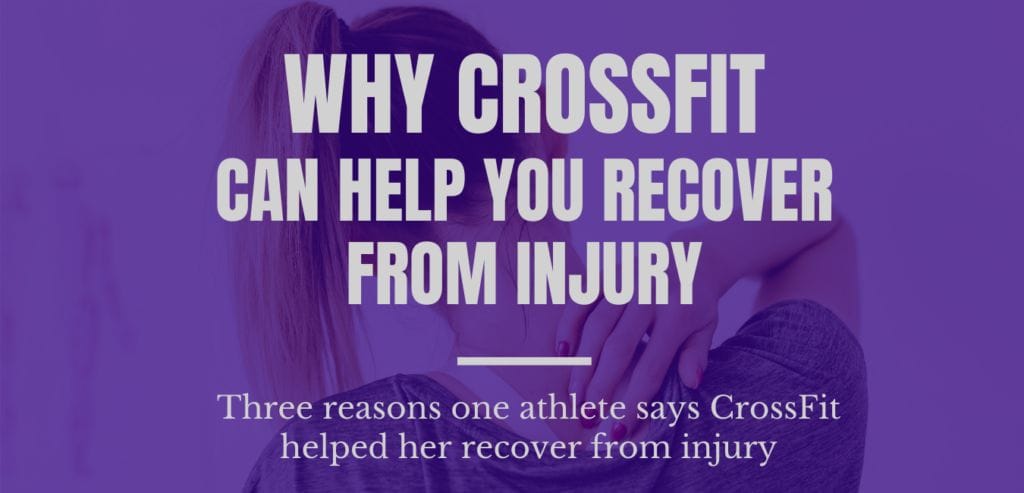CrossFit has played a crucial role in helping me recover from multiple knee surgeries and it can help you in recovering from injuries, too. When CrossFit training is combined with proper coaching it is highly effective for injury rehabilitation. If you want to get over your injury, you need to work with the ability you have, keep moving as much as possible, and gain strength!
So, why has CrossFit helped me recover from injury and how can it help you?
1. CrossFit is infinitely scalable.
2. CrossFit allows for building strength, a key part of injury recovery.
3. CrossFit keeps your body moving.
My story…
I have had five left knee surgeries and began participating in CrossFit in 2017. This was almost two years after my third knee surgery. I was suffering from continued chronic knee pain and my left leg had a remaining strength deficit compared to my right leg. My dad, Adam Cunningham, began introducing CrossFit workouts to me and scaling them to my abilities. I did step-ups instead of box jumps, air squats instead of back squats, a gradual introduction to running, hip strengthening, etc.
Within a few months, I noticed an improvement in strength and a reduction in my knee pain. Within a year, my knee no longer caused me pain —I could sprint, squat clean, box-jump, there was really no limit to what I could train. The strength I gained through CrossFit allowed for a full recovery which doctors had said, may not have been possible at that point. I could also still scale workouts to fit my strength abilities once my knee pain diminished, which was helpful. I played soccer for fourteen years so my upper body strength hardly existed in the first year of doing CrossFit.
But, the story doesn’t end there…
Flash forwards a few years, and in January 2019, pain in my knee returned and gradually got worse. During the last workout of the 2019 CrossFit Open, I hardly made it through the last set of thrusters because of the pain in my knee. At that moment, I knew something was really wrong. It took months to find a correct diagnosis and a surgeon who would listen to me. Finally, in January 2020, I had a scope done to assess articular cartilage damage. The full underside of my patella had Grade III cartilage damage. Additionally, I had widespread Grade IV cartilage damage (down to bone) on my lateral tibial plateau and a Grade IV focal cartilage defect on my lateral femoral condyle. Essentially, the patella and the lateral side of my knee had deteriorated. I was a candidate for an osteochondral allograft transplant, or a transplant of bone and cartilage from an organ donor.

CrossFit, with it’s scaling options, can be a daily part of recovery to keep you moving.
Since my surgeon let me back in the gym at one-month post-surgery, CrossFit has allowed me to keep moving and to scale to my current restrictions. While I cannot squat or run, or even walk yet, I can do something. At my current place in recovery, that has proved important to maintaining strength and flexibility as well as for the mental aspect of dealing with injury. I create WOD’s that consist of upper body, core, and single leg movements as well as strength train with movements such as seated shoulder press and bench press. I would encourage you to do the same; find what you can do and move. They say movement is medicine and I could not imagine this recovery without CrossFit!

CrossFit can play an important role in your injury recovery because it is scalable, it keeps your body moving, and it improves strength.
Of course, always consult with your doctor first and follow all restrictions given by your doctor, but utilize CrossFit to launch you toward coming back from injury stronger than ever!



